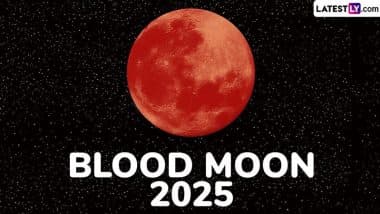The Blood Moon on March 14, 2025, falling on the same day as Holi, is set to create a rare and captivating celestial spectacle that blends the lively energy of the festival with the mysterious allure of a total lunar eclipse. Holi is celebrated for its bright colours and joyful atmosphere, which heralds the arrival of spring and symbolises the triumph of good over evil. Meanwhile, the Blood Moon, which occurs during a total lunar eclipse, brings an added layer of cosmic wonder, as the Moon takes on a striking red hue when Earth’s shadow envelops it. Over time, this rare celestial occurrence has been surrounded by numerous superstitions and myths, especially in societies where lunar eclipses are seen as powerful omens. In India, the event is known as Chandra Grahan and is often regarded as a mystical event that can influence human lives in beneficial and detrimental ways. This article will explain some prevalent superstitions revolving around the blood moon and Chandra Grahan myths. Chandra Grahan 2025 Coincides With Holi: Will Total Lunar Eclipse Be Visible in India? Blood Moon Meaning, Sutak Kaal Timing and Dos & Don’ts Explained.
From ancient civilisations to contemporary beliefs, seeing a blood-red Moon evokes awe, fear and wonder. Whether seen as a bad omen, a time for spiritual renewal, or an opportunity for fertility and purification, the Blood Moon continues to captivate the imagination. Blood Moon 2025 Date and Time: This Year’s First Total Lunar Eclipse Set To Grace the Sky, Here’s Significance and Other Details You Should Know.
Blood Moon Superstitions
1. Bad Omen and Harbinger of Disaster: One of the most common superstitions surrounding the Blood Moon is that it forewarns disaster or signifies bad luck.
2. Auspicious Period for Spiritual Cleansing: Despite its associations with foreboding events, many cultures also consider the Blood Moon as a time for spiritual renewal and cleansing. The belief is that people can harness cosmic energy to rejuvenate themselves by engaging in spiritual practices.
3. Pregnancy and Childbirth Myths: A prevailing superstition suggests that exposure to the lunar eclipse during pregnancy can lead to complications, congenital disabilities or health problems for the unborn child.
4. Fertility and Lunar Energy: In ancient cultures, the Blood Moon was often linked to deities or goddesses of fertility, believing that the Moon’s energy could enhance the success of fertility rituals.
Chandra Grahan Myths
1. Evil Spirits and Demons: In ancient Indian traditions, it is said that during the eclipse, a demon called Rahu swallows the Moon, causing the eclipse.
2. Superstitions Around Marriage: In some regions, Chandra Grahan is considered an unlucky time for marriages. The myth suggests that marriages during a lunar eclipse may be plagued by misfortune or face difficulties.
3. Harmful Effects on Crops: In rural areas, it is believed that planting seeds or harvesting crops during the lunar eclipse can result in poor yield or a failed harvest.
4. Bad Luck: Many believe that the period of Chandra Grahan should be avoided for starting new ventures or making important decisions.
The Chandra Grahan is a powerful and mysterious event in Indian culture, wrapped in myths and superstitions that have been passed down through generations. While many of these beliefs have been scientifically debunked, they continue to hold significant cultural value in various parts of the world.
(The above story first appeared on LatestLY on Mar 13, 2025 12:11 PM IST. For more news and updates on politics, world, sports, entertainment and lifestyle, log on to our website latestly.com).













 Quickly
Quickly













